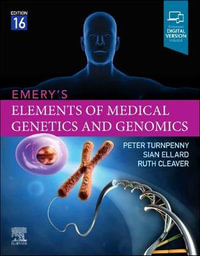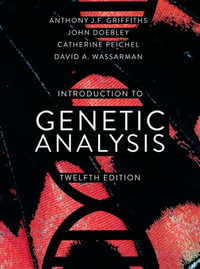Chapter 1 Larry E. Morrison Basic Principles of Fluorescence and Energy Transfer Fluorescence is highly sensitive to environment, and the distance separating fluorophores and quencher molecules can provide the basis for effective homogeneous nucleic acid hybridization assays. Molecular interactions leading to modulation of fluorescence include collisions, ground state and excited state complex formation, and long-range dipole-coupled energy transfer. These processes are well understood and equations are provided for estimating the effects of each process on fluorescence intensity. Estimates for the fluorescein-tetramethylrhodamine donor-acceptor pair reveal the relative contributions of dipole-coupled energy transfer, collisional quenching, and static quenching in several common assay formats, and show that the degree of quenching is dependent upon the hybridization complex formed and the manner of label attachment. Applications Chapter 2 David S. Perlin,* Sergey Balashov, Steven Park Multiplex Detection of Mutations Rapid and reliable detection of mutations at the genetic level is an integral part of modern molecular diagnostics. These mutations can range from dominant single nucleotide polymorphisms within specific loci to co-dominant heterozygotic insertions and they present considerable challenges to investigators in developing rapid nucleic acid based amplification assays that can distinguish wild-type from mutant alleles. The recent improvements of real time PCR using self reporting fluorescence probes have given researchers a powerful tool in developing assays for mutation detection that can be multiplexed for high throughput screening of multiple mutations and cost effectiveness. Here we describe an application of a multiplexed real time PCR assay using Molecular Beacon probes for the detection of mutations in codon 54 of the CYP51A gene in Aspergillus fumigatus conferring triazole resistance. Chapter 3 Arvind A. Bhagwat*, Jitu Patel, Trina Chua, Audrey Chan, Saul Ruiz Cruz, and Gustavo A. Gonzalez Aguilar Detection of Salmonella species in foodstuffs Conventional methods to detect Salmonella spp. in foodstuffs may take up to one week. Considering the limited shelf life of ready-to-eat foods as well as fresh produce, rapid methods for pathogen detection are required. Real-time detection of Salmonella spp. will broaden our ability to screen large number of samples in a short time. This chapter describes a step-by-step procedure using an oligonucleotide probe that becomes fluorescent upon hybridization to the target DNA (Molecular Beacon; MB) in a real-time polymerase chain reaction (PCR) assay. The capability of the assay to detect Salmonella species from artificially inoculated fresh- and fresh-cut produce as well as resdy-to-eat meats is demonstrated. The method uses internal positive and negative controls which enable researchers to detect false-negative PCR results. The procedure uses the buffered peptone water for the enrichment of Salmonella spp. and successfully detects the pathogen at low level of contamination (2-4 cells/25 g) in less than 24 h. Chapter 4 Gunter Schmidtke and Marcus Groettrup Identification of homozygous transgenic mice by genomic real time PCR The 26S proteasome is the executing protease of the ubiquitin dependent degradation system. It consists of one or two 19S regulatory sub complexes and one 20S proteolytic sub complex (1). The 20S proteasome is a barrel shaped cylinder which consists or four stacked rings (2). Each of the two outer rings consists of 7 different a-subunits, whereas each of the two inner rings is formed by 7 different b-subunits (3). Only three of these b-subunits bear a catalytically active N-terminal threonine (4,5). Under normal conditions these are b1(delta), b2 (Z) and b5 (mb1). However, by induction of some cytokines e.g. interferon-g, these subunits are exchanged against b1i(LMP2), b2i (Mecl1) and b5i (LMP7) and the so called immunoproteasome is formed (6, 7) . To investigate the role of LMP 7 in MHC class I restricted immunology, we decided to generate a transgenic mouse which constitutively expresses LMP7 in all tissues. To get the highest possible expression, we bread the mice to be homozygous for the transgene LMP7. These mice cannot be identified by conventional PCR. So far, southern blotting was the only possible method to quantify the DNA content. Here, we describe the analysis of these mice by quantitative PCR using sequence specific fluorescence resonance energy transfer (FRET)-primers to reliably detect a difference in DNA content as small as a factor of two or only one PCR cycle. Chapter 5 Sebastian Lukasiak, Kai Breuhahn, Claudia Schiller, Gunter Schmidtke and Marcus Groettrup Quantitative analysis of gene expression relative to 18S rRNA in carcinoma samples using the LightCyclerO instrument and a SYBR GreenI based assay: determining FAT10 mRNA levels in hepatocellular carcinoma Due to the fact that mutations and up- or down-regulation of genes can lead to the development of cancer, quantitative comparison of relative gene expression in healthy and cancerous tissue can gain valuable insights into tumourigenesis. While the semi-quantitative DNA microarrays are being used to identify differentially expressed genes on a genomic scale, real-time RT-PCR provides a power-full tool for quantitative measurement of gene expression. It presently is the most sensitive method available. Here we describe in detail a SYBR GreenI based assay using the LightCyclerO instrument to measure the levels of mRNA for the ubiquitin-like protein FAT10 relative to 18S rRNA in human hepatocellular carcinoma tissue. This method can be easily adapted to any tissue (human or mouse, rat etc.) and any gene. Chapter 6 Valentino Cattori and Regina Hofmann-Lehmann* Absolute quantitation of Feline Leukemia Virus (FeLV) proviral DNA and viral RNA loads by TaqMan(R) Real-time PCR and RT-PCR Sensitive TaqMan(R) real-time polymerase chain reaction (PCR)-based methods have been developed recently for the detection and quantitation of feline leukemia virus (FeLV) proviral DNA in infected cats. In this chapter, we outline the design and implementation of a TaqMan(R) real-time PCR assay to quantify total FeLV proviral and viral RNA loads in infected cats. The assay is designed to amplify all three FeLV subtypes (A, B and C), but not FeLV-related endogenous retroviral sequences. The system is tested and optimized using proviral DNA or viral RNA from cells infected with reference strains. The sequence used to produce the standard DNA and RNA is amplified, subcloned into a vector and sequenced. cRNA is synthesized from the linearized plasmid DNA. Standard DNA and RNA are quantified, diluted and used to determine efficiency, sensitivity, linear amplification range and precision of the quantitative TaqMan(R) real-time PCR assays. Chapter 7 Thomas D. Schmittgen,* Eun Joo Lee, M.S., Jinmai Jiang High throughput real-time PCR Real-time PCR is presently the gold standard of gene expression quantification. Configuration of real-time PCR instruments with 384-well reaction blocks, enables the instrument to be used essentially as a low density array. While PCR will never rival the throughput of microchip arrays, in situations where one is interested in assaying several hundreds of genes, high throughput, real-time PCR is an excellent alternative to microchip arrays. By combining SYBR green detection and 5 ul reaction volume, the associated costs of high throughput real-time PCR are comparable to microarrays. Described here is a complete protocol to perform real-time PCR in a 384-well configuration. Examples are provided to access numerous PCR primer sequences that may be used for high throughput real-time PCR. Methods of analysis are described to present real-time PCR data as heat maps and clustered similar to the presentation of cDNA microarray data. An example is provided to profile the expression of over 200 microRNA precursors using high throughput real-time PCR. Chapter 8 Rachael Carters, Jennifer Ferguson, Rupert Gaut, Paul Ravetto, Nicola Thelwell and David Whitcombe* Design and Use of Scorpions Fluorescent Signalling Molecules A number of probe systems exist for the real time detection of PCR products. Scorpions is a unique method wherein primer and probe are combined in a single oligonucleotide. During the PCR, the probe element becomes linked directly to its complementary target site with beneficial consequences. In particular, the uni-molecular mechanism of probe/target hybridisation, ensures rapid, reliable and robust probing of a chosen amplicon. We discuss the design and use of Scorpions and compare their use with similar systems. Chapter 9 Thomas Froehlich and Oliver Geulen Hybridization Probe Pairs and Single Labeled Probes: An Alternative Approach for Genotyping and Quantification Real-time PCR has become a standard tool both in quantitative gene expression and genetic variation analysis. Data collection is performed throughout the PCR process, thus combining amplification and detection into a single step. This can be achieved by combining a variety of different fluorescent chemistries that correlate the concentration of an amplified PCR product to changes in fluorescence intensity. Hybridization probe pairs and single labeled probes are sequence-specific, dye-labeled oligonucleotides, used in real-time PCR approaches, in particular for genotyping of SNPs. In that case, a detector probe is designed to cover the polymorphism. Allelic variants are identified and differentiated via post-PCR melting curve analysis. A single melting curve can distinguish different Tms, and differently labeled probes may be used, theoretically allowing multiplexed genotyping of several SNPs. - some editing of the chapter required by the authors - New Technologies Chapter 10 Ulf B. Christensen EasyBeacons(t) for the detection of methylation status of single CpG duplets This chapter describes two different fast protocols for optimising EasyBeacons(t) for the challenging detection of the methylation status of a single CpG duplet in bisulphite treated DNA. EasyBeacons(t) can be used in multiplex detections even if they do not have the same affinity for their respective targets giving very specific results for both real-time PCR detection and in endpoint analysis using inexpensive master mixes. The technology described in this chapter is a very competitive alternative to other real-time PCR technologies. Chapter 11 Adam P. Silverman, Hiroshi Abe, and Eric T. Kool* Quenched Autoligation (QUAL) Probes Methods are described for preparation and use of QUAL probes. These modified oligonucleotide fluorescent probes can be used to detect DNA and RNA in solution, on solid surfaces, and in fixed and living bacterial and human cells. They are quenched probes, and thus provide a "lighting up" signal in a single step, without removing unbound or unreacted probes from the analyte. QUAL probe signals can be detected by fluorescence spectrometer, by fluorescence microscope, or by flow cytometry. These probes can distinguish between very small variations, including single nucleotide differences, in nucleic acid targets. The described method includes a description of how to prepare the needed dabsyl quencher linker, how to prepare the QUAL probes by DNA synthesizer, and how to employ them in detecting nucleic acids in solution and in detecting RNAs in bacterial and human cells. Chapter 12 David J. French*, David G. McDowell, Paul Debenham, Nittaya Gale, Tom Brown. HyBeaconO probes for rapid DNA sequence detection and allele discrimination HyBeacon probes are single-stranded oligonucleotides with one or more internal base(s) labelled with a fluorescent dye. When a probe forms a duplex with its target sequence, the level of fluorescence emission increases considerably. HyBeacons have been developed as new tools for rapid sequence detection and discrimination and have been employed in a wide variety of applications including infectious diagnostics and analysis of human polymorphisms. Single-labelled (FVG1) and dual-labelled (FVG11) probes were designed to analyse the factor V Leiden (R506Q) polymorphism which causes an increased risk of deep vein thrombosis and pulmonary embolism. Detection and identification of factor V alleles is performed by melting curve analysis and determination of probe melting temperature (Tm). HyBeacon hybridisation to the glutamine allele (Q) causes the formation of mismatched DNA duplexes that are detected through decreases in Tm. HyBeacon probes are included in homogeneous PCR assays to genotype samples with respect to the factor V polymorphism within 20 minutes, using purified DNAs and unpurified saliva/blood samples. This paper describes the preparation of homogeneous PCR assays, LightCycler target amplification and subsequent melting curve analysis. This paper also describes the use of homologous oligonucleotides and melting analysis as a method for probe evaluation. Chapter 13 Elke Socher and Oliver Seitz* FIT-probes in real-time PCR Forced Intercalation Probes (FIT-probes) are PNA-based probes in which the thiazole orange dye replaces a cannonical nucleobase. FIT-probes are used in homogenous DNA detection. The analysis is based on sequence specific binding of the FIT-probe with DNA. Binding of the FIT-probe places thiazole orange in the interior of the formed duplex. The intercalation of thiazole orange between nucleobases of the formed probe-target duplex restricts the torsional flexibility of the two heterocyclic ring systems. As a result, FIT probes show strong enhancements of fluorescence upon hybridization. A remarkable attenuation of fluorescence is observed when forcing thiazole orange to intercalate next to a mismatched base pair. This base specificity of fluorescence signaling, which adds to the specificity of probe-target recognition, allows the detection of single base mutations even at non-stringent hybridization conditions. The performance of FIT-probes in real time PCR is demonstrated in an assay for the SNPtyping of human H-ras. FIT-probe was added at the start of a real time amplification containing the wild-type (G,G)-allele, mutant (T,T)-allele or heterozygous (G,T)-allele of the human H-ras gene. The identity of the target DNA is determined in real time due to significant differences in signal intensities. Chapter 14 Maria Erali, Robert Palais, Carl Wittwer* SNP Genotyping by Unlabeled Probe Melting Analysis Fluorescent nucleic acid detection in PCR generally uses oligonucleotide probes labeled with dyes. However, unlabeled oligonucleotides in the presence of saturating DNA dyes can also serve as hybridization probes. The DNA dye, LCGreen Plus, and a 3'-blocked unlabeled probe are added before amplification, and asymmetric PCR is performed at a 1:5 to 1:10 primer ratio. After PCR is complete, fluorescent melting curves reveal both probe melting at low temperature and amplicon melting at high temperature. After background removal, the melting temperature(s) of the probe/target duplex specific to the allele(s) amplified are revealed. Probes between 20 and 40 bp with Tms between 50 and 85 C are effective. The method requires only three standard oligonucleotides and endpoint fluorescence melting. No real-time PCR or allele-specific amplification is required. Unlabeled probes are inexpensive, provide the sequence specificity of probes, and allow simultaneous identification of multiple alleles by melting analysis. Non-Nucleic Acid Targets Chapter 15 Jun Li, Zehui Charles Cao, Zhiwen Tang, Kemin Wang and Weihong Tan* Molecular beacons for protein --DNA interaction studies -- an overview - Real-time monitoring of DNA-protein interactions involving molecular beacon (MB) and molecular beacon aptamer (MBA) was discussed in this chapter. MBs are single-stranded oligonucleotide probes with a hairpin structure. MBs have been designed for oligonucleotide recognition and protein/DNA interaction studies. Real-time monitoring of enzymatic reactions, such as cleavage, ligation and phosphorylation of single-stranded DNA by specific enzyme, has been studied using MBs. Meanwhile, a new generation of molecular probes, MBA, was designed by combining the excellent signal transduction properties of MBs with the specificity of aptamers for protein recognition. Two different aptamers, the one for thrombin and that for platelet-derived growth factor (PDGF), have been successfully used to construct MBA probes. The interaction between the proteins and the MBA probes was investigated by fluorescence resonance energy transfer, fluorescence anisotropy and time-resolved fluorescence. This chapter has reviewed our recent progress in this area. Chapter 16 D. Summerer DNA Polymerase Profiling We report a simple homogeneous fluorescence assay for quantification of DNA polymerase function in high throughput. The fluorescence signal is generated by the DNA polymerase triggering opening of a molecular beacon extension of the template strand. A resulting distance alteration is reported by fluorescence resonance energy transfer (FRET) between two dyes introduced into the molecular beacon stem. We describe real-time reaction profiling of two model DNA polymerases. We demonstrate kinetic characterization, rapid optimization of reaction conditions and inhibitor profiling using the presented assay. Furthermore, to supersede purification steps in screening procedures of DNA polymerase mutant libraries, detection of enzymatic activity in bacterial expression lysates is described. Chapter 17 S. Hani Najafi-Shoushtari and Michael Famulok* Modular reporter hairpin ribozymes for analyzing molecular interactions Methods for the detection of biologically relevant interactions by highly precise catalytic control elements based on hairpin ribozymes, and their subsequent analysis are described. These include ribozyme design, catalytic performance in real time as a function of fluorescence signal amplification, and applications for sensing protein and nucleic acid interactions in high throughput formats. Detailed instructions for two of our main reporter ribozyme formats that either follow repressible or inducible regulatory mechanisms are provided. We have shown that these techniques can be applied for detecting diverse target molecules including microRNAs, or protein-protein interactions. These reporter systems thus represent a general way to obtain signal-amplifying sensors for diverse applications in molecular profiling. Chapter 18 Jorg S. Hartig and Michael Famulok Screening of Molecular Interactions using Reporter Hammerhead Ribozymes The characterization of molecular interactions is a central task in modern life sciences. Applications such as drug screening in pharmaceutics or the elucidation of biomolecular interactions in molecular biology rely on efficient methods to search for interacting partners. Here, we describe a novel technique that utilizes hammerhead ribozymes to signal molecular interactions. The ribozyme is modified by a domain that specifically binds to a target molecule such as a protein. Upon binding of the target, the catalytic activity of the ribozyme is changed, allowing for detection of the presence as well as the occurrence of interactions of the targeted ligand. The assay can be performed in high-throughput format by employing double-labelled ribozyme substrates, hence being well suited for drug screening applications. The detection proceeds rapidly and in real-time. Moreover, the technique does not require labelling of the target molecule nor the potential interaction partners or analytes since an indirect readout is facilitated by switching the catalytic activity of a reporter ribozyme. The assay can be utilized to sense a broad variety of biomolecular interactions, and is very sensitive due to signal amplification by the ribozyme reaction.























